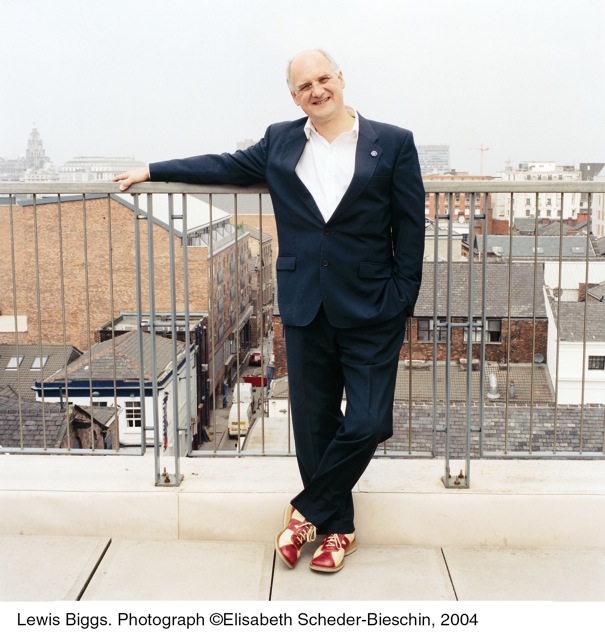
In 2008, the city of Liverpool was named Europe's Capital of Culture. The Liverpool Biennial's chief executive and artistic director (and former director of Tate Liverpool from 1990-2000) Lewis Biggs can take a lot of credit for this achievement. The Tate Liverpool and Biennial broadened the expansion of arts programs in the northwestern city, which wasn't known for much more than being England's first major port city and the birthplace of the Beatles. This year, Biggs and his curatorial team, comprised of Lorenzo Fusi (Liverpool Biennial curator), Peter Gorschlüter (of Tate Liverpool), Patrick Henry (of Open Eye Gallery), Sara-Jayne Parsons (of the Bluecoat), Mike Stubbs (of FACT - Foundation for Art and Creative Technology), and Mark Waugh (of A Foundation Liverpool), are putting together one of their most controversial and exciting editions since the biennial's inception in 1998, titled "Touched." I sat down with Biggs to talk about the recently opened biennial exhibition.
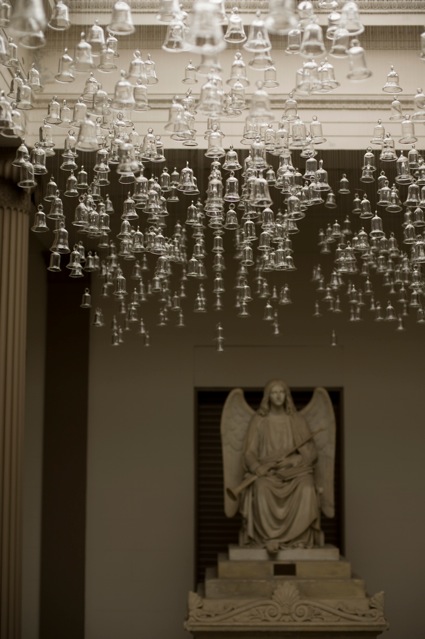

Both images, Laura Belém, The Temple of a Thousand Bells, 2010. Installation with sound. Glass bells, nylon string, 5.1 sound system, lighting. Music composed by Fernando Rocha. Photo courtesy of artist/Alex Wolkowicz.
MC: The title of the 2010 edition, "Touched," refers to works of art that affect the viewer, or as you put it in the press release, "art that is close enough to us to move us in mind, body and soul." Can you tell me more about why you decided this was an important theme to follow?
LB: There is a good deal of art that in some traditions of conceptual work are anti-affect, in fact a very large chunk of mainstream art after 1950 took against affect art altogether because they said, "No, we hate affect art because this is how we get manipulated by totalitarianism and therefore artists shouldn't play that game." And a lot of artists agreed to play that game, which I personally believe is to the loss of art.
MC: You quote Marcel Duchamp in the press release, referring to his epic installation Etant Donnés and his comment, "A work of art is dependent on the explosion made by the onlooker." I suppose this emphasis and on pro-affect art isn't necessarily an extension of Stuckism, which focused primarily on the resurgence of figurative painting, but you are more generally proposing the question what makes 'good art' and with that, offering that good art is art that affects the viewer in some way, or that connection with the work and the beholder is explosive, and only has longevity with that explosive connection?
LB: I didn't want to make a show that was particularly polemical but yes, I did want to make a show that raises the question of 'what makes good art?'
And I do think that good art--the art that tends to last--is that art that hits human beings on several different levels at once because everybody's different. Some people approach art through their emotions, others through their head, and the art that can appeal to all of those levels is more likely to reach more people. Having more people [see the work] doesn't necessarily mean better art but it stands a better chance of lasting.
MC: Is 100 percent of the work commissioned, and how is the show organized?
LB: Since 2002, 95 to 100 percent of the work is commissioned. Also, this year we have five special projects within the show: a painting show titled "The Human Stain" [no relationship to the 2000 Philip Roth novel, says Biggs]; a show called "Rethinking Trade" about artists who use trade as a fundamental aspect of their work; work by 20 artists from Cuba [the final act of Tania Bruguera's Cátedra Arte de Conducta from Havana will take place over the 10 week period of the Biennial, with continuing actions by 20 Cuban artists recreating Allan Kaprow's Happenings and staging new performances and events]; Magdalena Abakanowicz will show an installation [from 1978/80, previously unseen in the UK]; and for the first time, Liverpool Biennial commissioned an artist [this year Carlos Amorales ] to be responsible for the visual concept for marketing "Touched."
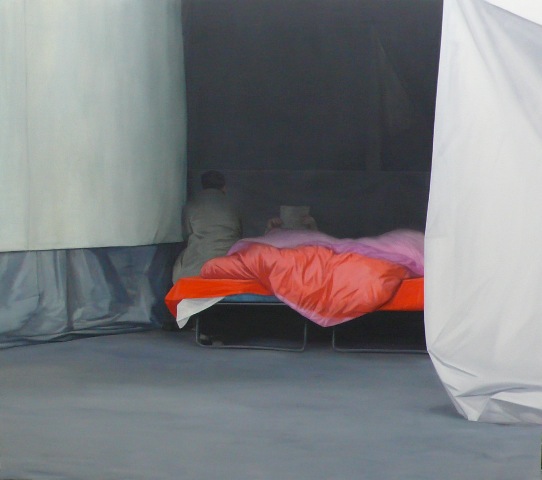
Tim Eitel, Hunger, 2009, included in the exhibition "Human Stain."
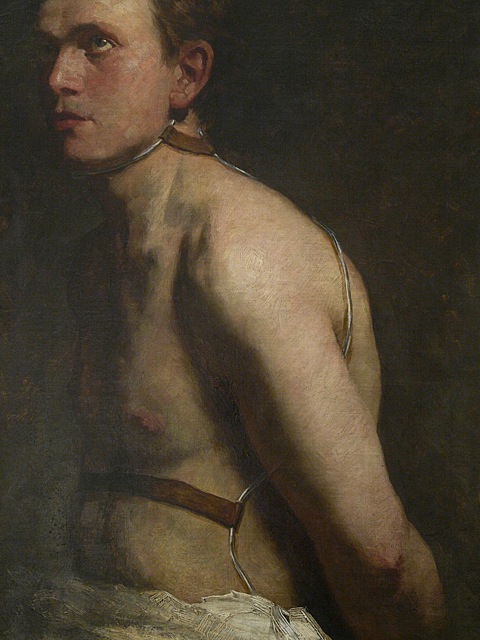
Markus Schinwald, Baldwin, 2009. Oil on Canvas, 80 x 60 cm. Included in the exhibition "Human Stain." Private collection Italy, Courtesy Gallery Gio Marconi, Milano.
MC: You have a very impressive list of artists involved--Song Dong, NS Harsha, Alfredo Jaar, Raymond Pettibone, Tala Mandani, Do-Ho Suh, Franz West, Tim Eitel, Tehching Hsieh, Kris Martin, Otto Muehl, Carol Rama, and Ryan Trecartin, and many more--and six talented curators. Can you talk about the inception of the idea and the sub-shows and decision to include these artists? Does each curator come to the table within a particular idea and artists in mind?
LB: We start out discussing the theme and then I ask each curator to come up with one artist who is quintessential to their viewpoint about what the theme is; then we discuss that and out of that we then ask the curators to articulate the field that interests them and then to populate that field with other artists work, building on the relationship with the first artist. That means that there are coherently different points of view within the exhibition because each curator is very much in control of not only their intellectual territory but also their physical territory. For example the curator from the Tate is responsible for the artists who work with the Tate, and the curator from the Bluecoat is responsible for the artists who work with the Bluecoat, et cetera. You will notice going from one bit of the exhibition to another the interests of the gallery and the curator and the possibilities of the gallery. Because there's a gallery like FACT that's digitally- or moving image-orientated so naturally they tend to go with artists who [work in that medium].
So you'll see the difference within the show but there's always a hotly debated rationale on why each artist should come into the show. And it's not done by consensus because I think consensus is a bad way to do things. I have override. I have an editorial position so if I dislike an artist's work, I can ask a curator to remove the artist.
MC: Curatorial collectives seem to be the way to go in big exhibitions like biennials. Can you talk about the advantages and disadvantages of having a curatorial team as opposed to one curator?
LB: Having more curators to go around among the artists is more effective and more efficient. The artists are better looked after so you get better works. What isn't so effective is actually that some visitors and some members of the press really want a single voice with which they can relate. That's very understandable if you think that the show is more important than the art in it.
But we've always taken the view--and we wouldn't commission new art if we didn't--that the work is more important than the show. So our investment goes into the new art as opposed to the show.
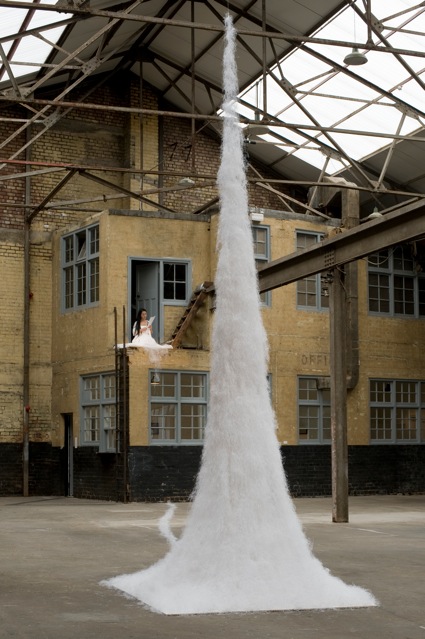
Sachiko Abe, Cut Papers, Courtesy of Alexandra Wolkowicz
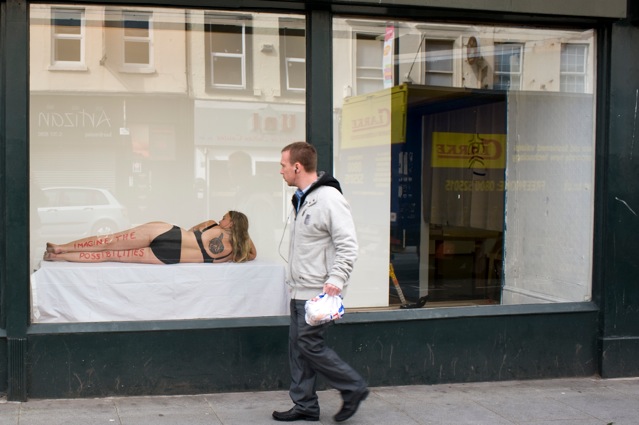
Daniel Knorr, Naked Corner, Courtesy of Alexandra Wolkowicz
MC: The Manchester International Festival (MIF), mainly a performing arts festival, is entering its third edition this summer. Since its inception, MIF has also gotten quite a lot of attention. Do you think this, as well as institutions like the Baltic Centre, Tate Liverpool, the Whitworth Art Gallery and others expanding their programs is drawing more visitors from the south, or elsewhere, to the northern part of the country? Is there a real cultural push and/or more government support for arts programs in northern cities?
LB: The main difference between the south of the country and the north is the number of foreigners who come through. The proportion of non-resident visitors who visit the British Museum or the Tate is very high. And the north of the country still doesn't attract that number of tourists. I think it will take a while. People in the south of the country are again taking holiday up north, which is promising. I think the culture outside the capital is very different now from what it was 25 or 30 years ago, in a very positive direction and not only the performing arts but also for the visual arts. But that's also with the internationalization of the UK visual arts scenes.
Effectively it's about artists from New York or Beijing or Singapore understanding that they can show in Manchester or Newcastle or Liverpool and still get a very good audience. You know there are 50 million people who live in that little slice of the country between New Castle and Liverpool. It's bigger than Belgium, so it's not small [laughs]. It doesn't have Heathrow next door but it has other advantages.
MC: Going back to the painting show, do you see this being a regular sub-show from here on in?
LB: We'll have to see but I wouldn't be surprised.
I do think painting is back on the agenda in a big way. I also think that materiality is back on the agenda in a big way, including notions of craft and connoisseurship, because there are so many people who have a training in art history; and if you've spent time looking at old art, you become attuned to what art does through materiality and so you begin to look to that in contemporary art as well. And anyway, I do think that matching one's experience with what you're looking at and questioning what you're looking inevitably involves materiality, just like it involves the sense of place.
We use this word "emplacement" a lot in this show because ever since Feminism in the 70s there has been a focus on the body as a site, a political site and a site of subjectivity and I think that yes, our bodies are involved, but it also happens to be where we are at this place at this time at any given moment that affects our subjectivity. That awareness of context all the time is much more present to people now and much more present to people through studying the history of art and materiality of art. So 20 years ago when artists put statements on the wall and expected that statement to mean the same thing, whether it was in Sao Paolo or... that brand of universality conceptualism is pretty dead in the water.
Liverpool Biennial International Festival of Contemporary Art, Sept.18-Nov.28
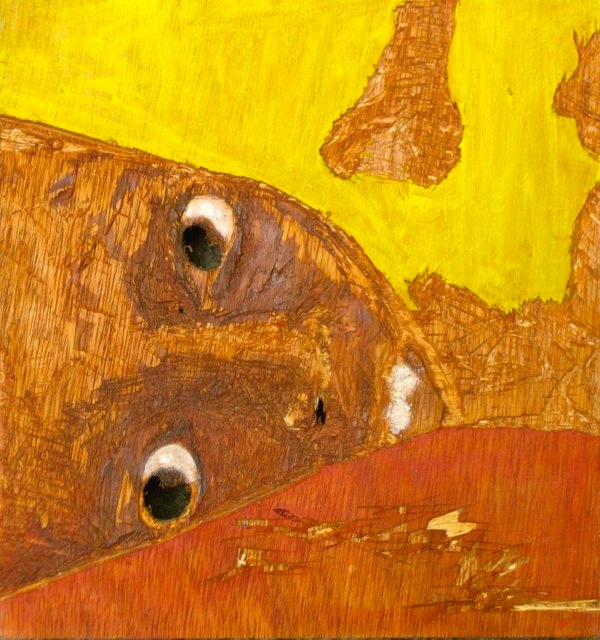
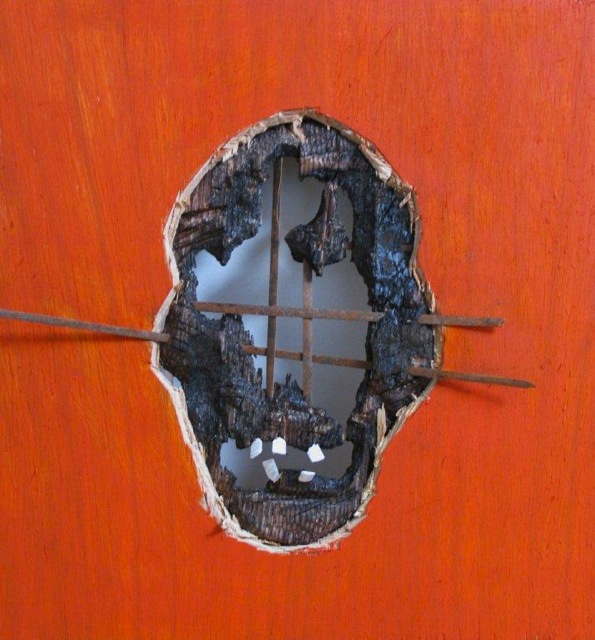
Above works by Aime Mpane

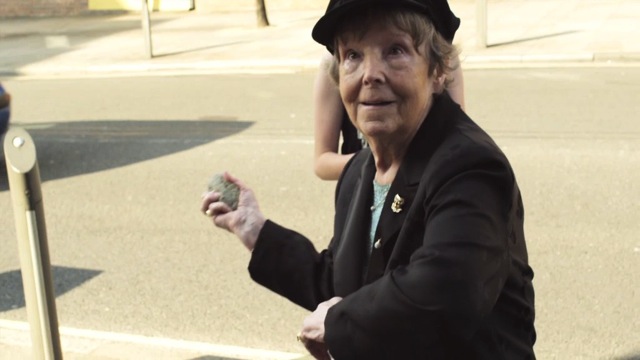

Above three images, Cristina Lucas, video still from Touch and Go, 2010. Filmed at: Europleasure International Ltd.